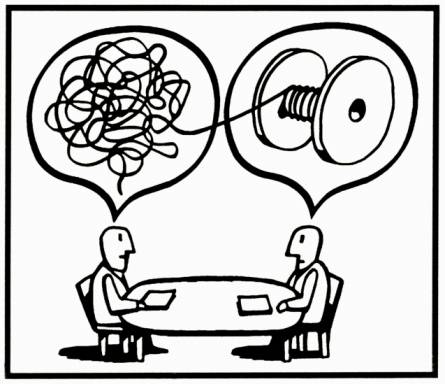Brent Adamson wrote an outstanding HBR article on “Sensemaking For Sales.” It’s an important concept, focused on helping our customers make higher quality decisions, with greater confidence.
One of the most important things Brent discusses is how customers tend to cope when faced so much high quality information. Customers tend to fall back on what they already know and have confidence in. These cognitive biases tend to drive “belief perseverance,” and “status quo bias,” doing what we’ve always done.
Brent, also, highlights three styles that sales people adopt to help their customers. The “giving” approach is one where the sales person provides more information (one wonders why we deal with information overload with more information.). The second is “telling,” where we seek to instruct the customer on what they need to know and how to do it. The third, “sensemaking,” helps the customer discover and learn what’s most important to them. It prioritizes simplicity over detail.
Brent goes on to discus how sensemakers work differently. They tend to connect customers with relevant resources, invest time in clarifying the information customers are dealing with, and collaborate on customer learning.
Be sure to read the article, it’s a fantastic summary of Brent’s extensive research in this area.
But let me pose the question, “Is sensemaking just for our work with customers?”
When you think about, being overwhelmed with high quality information is something that impacts all of us. It impacts each of our people, and, even, leaders.
What is we applied the principles of sensemaking to coaching and developing our own people? What if we helped them sort through the issues most critical to them and maximizing their ability to perform in their role.
We can walk through the three different styles of managers tend to use with their people. They look a lot like those that Brent has highlighted. We tend to overwhelm them with more information–more training programs, more materials, more content, more tools, more processes. Alternatively, we tell them what to do, based on our experience.
We know great leaders and coaches tend to use the sensemaking approach (though they may not have recognized this) to help their people learn and focus on that which makes most sense to each person.
We can look at what sensemakers do in working with their customers (connecting with relevant resources, clarifying information, collaborating on learning), and we can apply the same principles in helping our people grow and improve.
Be sure to read Brent’s article. Help your people learn how to adapt these approaches in working with their customers. Accelerate that learning by modeling the same sensemaking approaches when you work with your people–coaching and developing them.

Leave a Reply